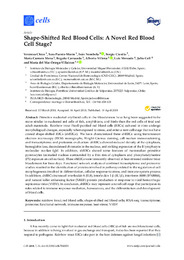Por favor, use este identificador para citar o enlazar este ítem:
https://hdl.handle.net/11000/6978Registro completo de metadatos
| Campo DC | Valor | Lengua/Idioma |
|---|---|---|
| dc.contributor.author | Chico, Verónica | - |
| dc.contributor.author | Puente Marín, Sara | - |
| dc.contributor.author | Nombela Díaz, Iván | - |
| dc.contributor.author | Ciordia, Sergio | - |
| dc.contributor.author | Mena, María Carmen | - |
| dc.contributor.author | Carracedo, Begoña | - |
| dc.contributor.author | Villena, Alberto | - |
| dc.contributor.author | Mercado Cerda, Luis Antonio | - |
| dc.contributor.author | Coll Morales, Julio | - |
| dc.contributor.author | Ortega-Villaizan Romo, María del Mar | - |
| dc.date.accessioned | 2021-01-25T08:39:53Z | - |
| dc.date.available | 2021-01-25T08:39:53Z | - |
| dc.date.created | 2018-04-14 | - |
| dc.date.issued | 2021-01-25 | - |
| dc.identifier.issn | 2073-4409 | - |
| dc.identifier.uri | http://hdl.handle.net/11000/6978 | - |
| dc.description.abstract | Primitive nucleated erythroid cells in the bloodstream have long been suggested to be more similar to nucleated red cells of fish, amphibians, and birds than the red cells of fetal and adult mammals. Rainbow trout Ficoll-purified red blood cells (RBCs) cultured in vitro undergo morphological changes, especially when exposed to stress, and enter a new cell stage that we have coined shape-shifted RBCs (shRBCs). We have characterized these shRBCs using transmission electron microscopy (TEM) micrographs, Wright–Giemsa staining, cell marker immunostaining, and transcriptomic and proteomic evaluation. shRBCs showed reduced density of the cytoplasm, hemoglobin loss, decondensed chromatin in the nucleus, and striking expression of the B lymphocyte molecular marker IgM. In addition, shRBCs shared some features of mammalian primitive pyrenocytes (extruded nucleus surrounded by a thin rim of cytoplasm and phosphatidylserine (PS) exposure on cell surface). These shRBCs were transiently observed in heat-stressed rainbow trout bloodstream for three days. Functional network analysis of combined transcriptomic and proteomic studies resulted in the identification of proteins involved in pathways related to the regulation of cell morphogenesis involved in differentiation, cellular response to stress, and immune system process. In addition, shRBCs increased interleukin 8 (IL8), interleukin 1 _ (IL1_), interferon 8888 (IFN8888), and natural killer enhancing factor (NKEF) protein production in response to viral hemorrhagic septicemia virus (VHSV). In conclusion, shRBCs may represent a novel cell stage that participates in roles related to immune response mediation, homeostasis, and the differentiation and development of blood cells. | es |
| dc.description.sponsorship | This work was supported by the European Research Council (ERC Starting Grant GA639249 | - |
| dc.description.sponsorship | The proteomic analyses were performed in the Proteomics Facility of The Spanish National Center for Biotechnology (CNB-CSIC) that belongs to ProteoRed, PRB2-ISCIII, supported by Grant PT13/0001. | - |
| dc.format | application/pdf | es |
| dc.format.extent | 22 | es |
| dc.language.iso | eng | es |
| dc.rights | info:eu-repo/semantics/openAccess | es |
| dc.subject | rainbow trout; | es |
| dc.subject | red blood cells | es |
| dc.subject | shape-shifted red blood cells | es |
| dc.subject | RNA-seq | es |
| dc.subject | transcriptome | es |
| dc.subject | proteome | es |
| dc.subject | functional network | es |
| dc.subject | immune response | es |
| dc.subject | eat-stress | es |
| dc.subject | VHSV | es |
| dc.subject.other | 577 - Bioquímica. Biología molecular. Biofísica | es |
| dc.title | Shape-Shifted Red Blood Cells: A Novel Red Blood Cell Stage? | es |
| dc.type | info:eu-repo/semantics/article | es |
| dc.contributor.institute | Instituto de Biología Molecular y Celular | es |
| dc.identifier.doi | 10.3390/cells7040031 | - |
| dc.relation.publisherversion | https://doi.org/10.3390/cells7040031 | - |

Ver/Abrir:
1-Chico et al_2018_Cells_Shape-Shifted Red Blood Cells-A Novel Red Blood Cell Stage_cells-07-00031-v2.pdf
8,08 MB
Adobe PDF
Compartir:
 La licencia se describe como: Atribución-NonComercial-NoDerivada 4.0 Internacional.
La licencia se describe como: Atribución-NonComercial-NoDerivada 4.0 Internacional.
.png)